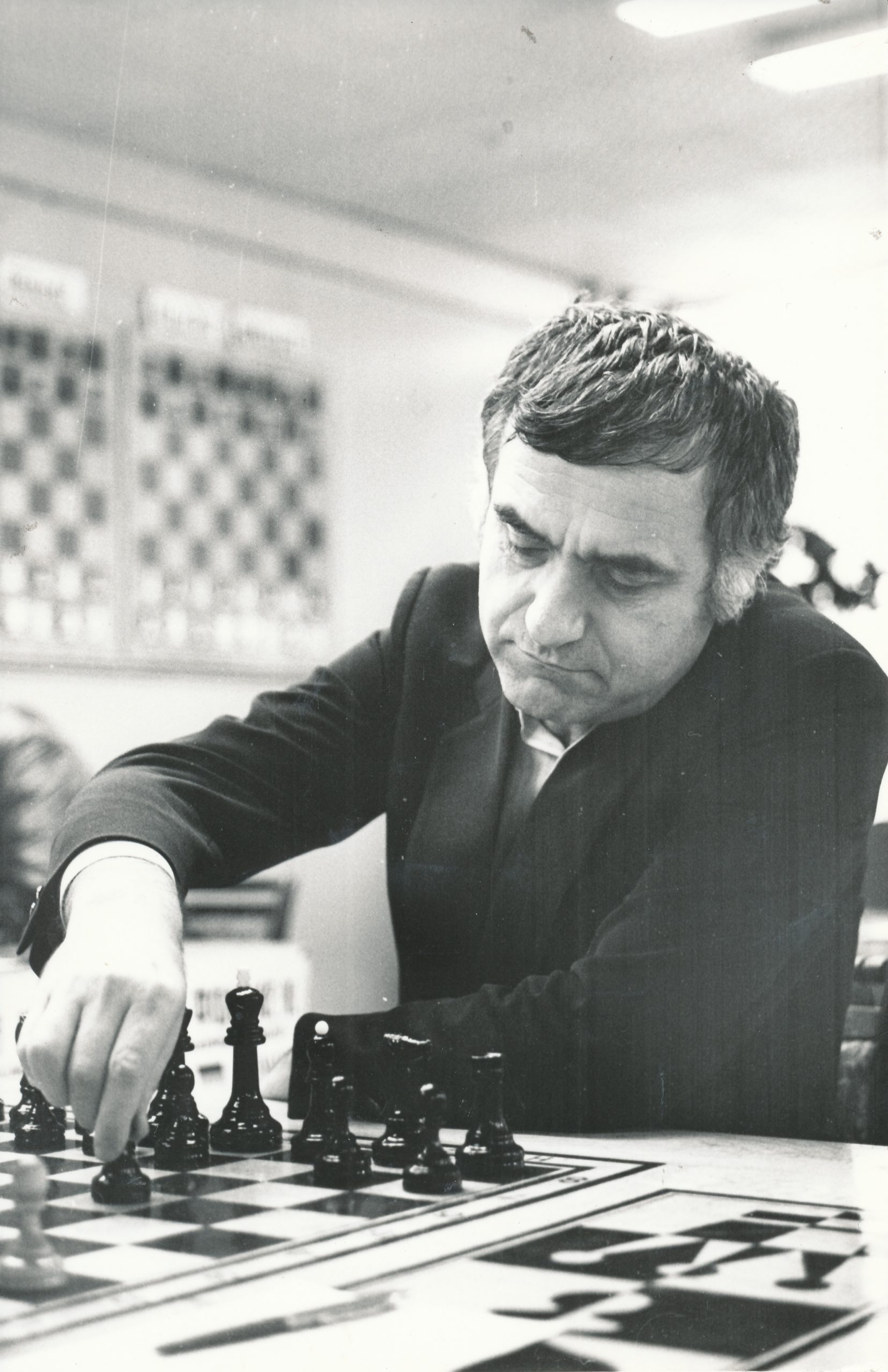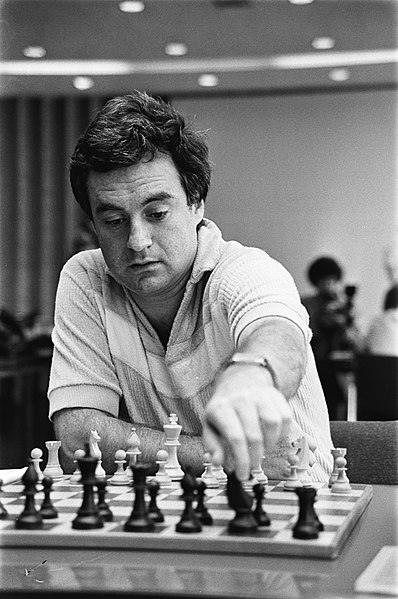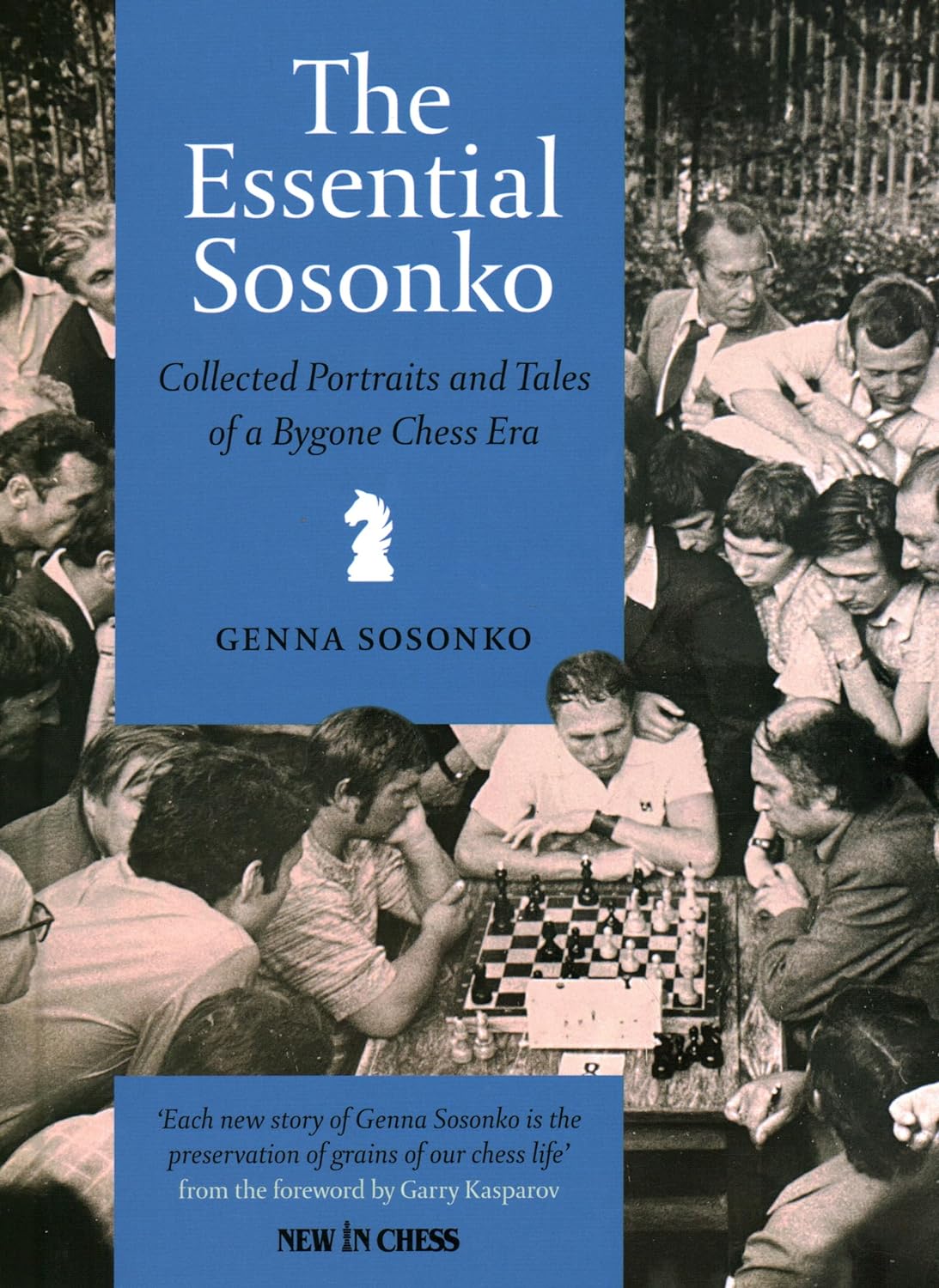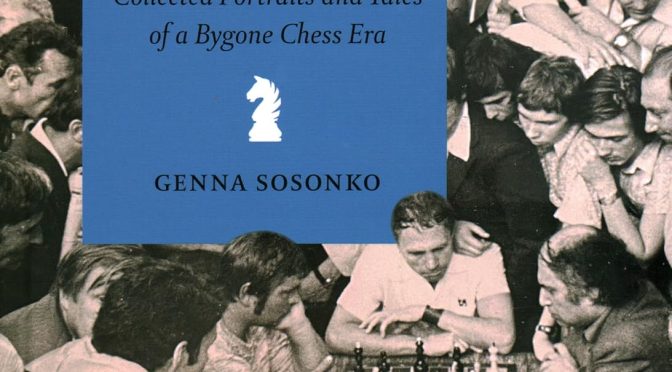From the publisher:
“Genna Sosonko is widely acclaimed as the most prominent chronicler of a unique era in chess history. In the Soviet Union chess was developed into an ideological weapon that was actively promoted by the country’s leadership during the Cold War. Starting with Mikhail Botvinnik, their best chess players grew into symbols of socialist excellence. Sosonko writes from a privileged dual perspective, combining an insider’s nostalgia with the detachment of a critical observer. He grew up with legendary champions such as Mikhail Tal and Viktor Korchnoi and spent countless hours with most of the other greats and lesser chess mortals he portrays.
In the late 1980s he began to write about the champions he knew and their remarkable lives in New In Chess magazine. First, he wrote primarily about Soviet players and personalities, and later, he also began to portray other chess celebrities with whom he had crossed paths. They all vividly come to life as the reader is transported to their time and world. Once you’ve read Sosonko, you will feel you know Capablanca, Max Euwe and Tony Miles. And you will never forget Sergey Nikolaev.
This monumental book is a collection of the portraits and profiles Genna Sosonko wrote for New in Chess magazine. The stories have been published in his books: Russian Silhouettes, The Reliable Past, Smart Chip From St. Petersburg and The World Champions I Knew. They are supplemented with further writings on legends such as David Bronstein, Garry Kasparov and Boris Spassky. They paint an enthralling and unforgettable picture of a largely vanished age and, indirectly, a portrait of one of the greatest writers on the world of chess.
Genna Sosonko (1943) was born in Leningrad, where he was a leading chess trainer. Following his emigration from the Soviet Union in 1972, he settled in The Netherlands. He won numerous tournaments, including Wijk aan Zee in 1977 (with Geller) and 1981 (with Timman) and an individual gold medal at the Olympiad in Haifa 1976. After his active career, Sosonko discovered a passion for writing.

‘Each new story of Genna Sosonko is the preservation of grains of our chess life’ — from the foreword by Garry Kasparov”

If you’re a lover of chess culture and literature you’ll be familiar with the writings of Genna Sosonko, whose essays chronicle, in particular, chess life in the former Soviet Union in the post-war period.
What we have here is a compendium of his biographical essays: 58 of them plus a short foreword by Kasparov. Most of them have appeared twice before, in New in Chess magazine, and in previous collections of his essays. In addition to the books mentioned above, some of them appeared, in some cases with different titles, in Genna Remembers, published by Thinkers Publishing and previously reviewed here. One of the essays is based on extracts from Sosonko’s book on Bronstein, published by Elk and Ruby. But, in the case of the books, you only get the biographies, not everything.
If you’re a Sosonko fan you’ll have read it all before. If not, and you’re attracted to the subject matter, this might be a good place to start.
You don’t just get Soviet players, though. English readers will be drawn to the chapter on Tony Miles, billed as The Cat That Walked By Himself, whose mental health problems are treated sympathetically.
But, for me, the lesser known figures are of the most interest. Take, for instance, the stories of two players whose lives both ended in tragic circumstances in 1997.
The brilliant Latvian theorist and tactician Alvis Vitolins was born in 1946. ‘Naïve, unusual and absorbed in himself’, had he been born a few decades later, he would undoubtedly have been diagnosed with Asperger Syndrome, or, today, with ASD, and later developed schizophrenia. “He did not have any close friends. He avoided other people, especially strangers, especially those who were not chess players.” He never fulfilled his potential, his mental health declined and, in 1997, he threw himself from a railway bridge onto the ice of a frozen river.
Then there was Evgeny Ruban, from what is now Belarus, born in 1941. A positional player with a classical style who excelled with the white pieces, but another man with his own demons. Ruban was an alcoholic, permanently broke, and also gay, living in a small apartment with his elderly mother. Like Vitolins he also had problems with his mental health. In autumn 1997, in a state of inebriation, he was hit by a car, dying as a result of his injuries. His mother couldn’t afford the cost of his funeral, which was paid for by the car driver.
Two poignant stories which serve as a salutary reminder that, as well as the grandmasters and champions, we need to hear about those who had the talent but not the good fortune, those who fell through the cracks. You might wonder whether chess was a cause of their problems or provided solace in difficult times. It would have been good if their chapters had included a few of their games, but this wouldn’t have fitted into the format of the book.
On the other hand you may well be inspired by the life of Abram Khasin ((1923-2022): he played at Hastings in 1963-64), who lost both legs in the Battle of Stalingrad, but lived to within ten days of his 99th birthday, playing chess right until the end.
There’s also the exotically named Lidia Barbot-de-Marny (1930-2021), born in Shanghai but with French, German and Russian family roots. She eventually settled in Estonia, where she became one of their leading woman players. “Chess has given me a colossal amount of good things, everything you could say.” Although she never became a master, she was a much loved chess teacher, working with young children in the Tallinn House of Chess.
There are always stories, some happy, others sad, all of which need to be told. The stories of the failures are as important as those of the successes, the stories of the lesser players as important as those of the world champions.
Much of the book is, as you’d expect, concerned with the great Soviet players of that era, but, for me, the real value of Sosonko’s work is in his writing about those you don’t read about elsewhere.
He writes beautifully as well, and the translations, mostly by Ken Neat, Steve Giddins and Sarah Hurst, are exemplary. But at some point you start to realise that Sosonko is, up to a point, playing on your emotions. There are no sources or references, just his memory, which is undoubtedly extraordinary, but perhaps, like everyone’s, fallible. At the start of his essay on Ludek Pachman, he writes about visiting London for the first time to play in the 1972 Islington Congress. He took the ferry from Hook of Holland and then, apparently, had his papers checked in Brighton. If you take the ferry from Hook of Holland now you’d end up in Harwich, on the east coast, nowhere near Brighton, on the south coast, and, as far as I can tell, it was the same in 1972. Once I find something I don’t believe, I start to question everything else.
If you’re looking for a book which will improve your rating, this isn’t for you as there are no games at all. But, if you’re attracted to human interest stories, Sosonko is essential reading. You might want to invest in all his essay collections, and, if you do so, you probably won’t need this volume. If your interest is mostly in his biographical essays, and you haven’t read them elsewhere, this will be the book for you.
As a hefty 840-page hardback it’s more suited for weight training than for putting in your pocket to read between rounds of your next tournament, so you might opt for the eBook instead. I’d have liked some games, and ideally more photographs than the 32 glossy pages we get here, but this would clearly have been impractical.
A strong recommendation, then, for anyone who’s interested in this aspect of chess and hasn’t read it all before. You can find out more and read sample pages on the publisher’s website here.
Richard James, Twickenham 12th April 2024

Book Details:
- Hardcover: 840 pages
- Publisher: New In Chess (31 May 2023)
- Language: English
- ISBN-10:9083311287
- ISBN-13:978-9083311289
- Product Dimensions: 18.06 x 6.32 x 23.5 cm
Official web site of New in Chess.


